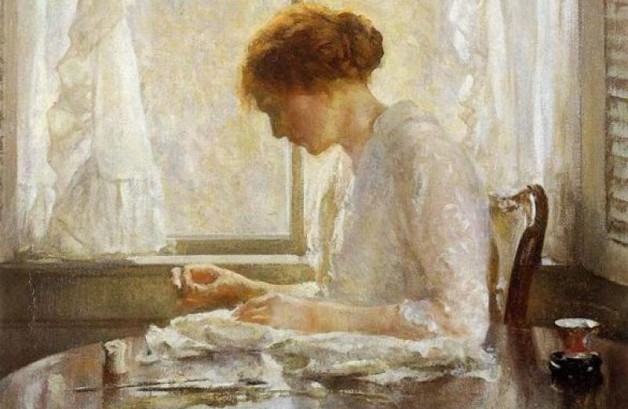Today the Church celebrates the memorial of Our Lady of Mount Carmel, a day that highlights the maternal protection of Our Lady over the Carmelite Order. There are numerous ties that bind the Dominicans and the Carmelites together: our strong emphasis on contemplation, St. Teresa of Avila’s fondness for Dominican confessors, Bl. Elizabeth of the Trinity’s experience of spiritual transformation after hearing a Dominican friar preach on the indwelling of the Trinity within the soul, and the list goes on. Indeed, the connection is so strong that the twentieth century saw Dominican theologians strive to synthesize the teachings of St. John of the Cross and St. Thomas Aquinas on the spiritual life.
I, however, would like to consider another connection between the Dominicans and the Carmelites, that is, the way the religious habits of both orders manifest the maternal mediation of Our Lady. According to Carmelite tradition, it was on this date that Our Lady appeared to St. Simon Stock and gave to him the brown scapular, saying “Take this Scapular, it shall be a sign of salvation, protection in danger and a pledge of peace. Whosoever dies wearing this scapular shall not suffer eternal fire.” While this scapular was originally only worn by Carmelites, it was soon adopted by the lay faithful. To this day, the brown scapular, in its miniaturized form, is one of the most popular of all Catholic sacramentals.
The white Dominican scapular came to us in a slightly different way. The most notable event connected with our scapular is associated with Bl. Reginald of Orleans. When Bl. Reginald was near death, Our Lady appeared to him, anointed him, and immediately restored him to health. She then showed him the full Dominican habit—including the scapular—and said, “This is the habit of your Order.” When the mother of God definitively confirmed the habit of our Order, that quelled any question about what the friars preachers would wear.
But what is the reality to which both of these stories attest? Both Orders enjoy the maternal mediation of Our Lady. She intercedes as a mother and as one through whom grace comes. This is true in general for all Christians, but in a particular way for those religious who manifest her mediation in their very clothing. The Dominican tradition has affectionately spoken of Our Lady as the Vestiaria of the Order, that is, the one who clothes us, our “seamstress.” She who clothed Our Lord as a child has clothed us as well.
Christian language, drawing from St. Paul, uses the phrase, “May God who has begun the good work in you, bring it to completion.” Our Lady as well, by divine decree, is present in the beginning and the completion of the good works of God. Any Dominican or Carmelite needs only to look in the mirror for proof.
✠
Image: Joseph DeCamp, The Seamstress







